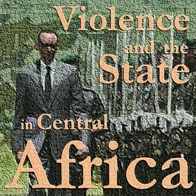 Rwanda has just completed its first Large Dam since the genocide (traditionally defined as one over 15 metres high). The Nyabarongo Dam will become the country’s primary power station and increase Rwanda’s power generation by a third. It is arguably the first singularly big development project to be completed by president Kagame’s government, and is set to be the first of many with a further four Large Dams in the immediate pipeline and the Bugasera Airport under construction. They form part of a wider effort to build large ‘modern’ infrastructures across the country, from road improvements and increased energy production to skyscrapers in the capital Kigali.
Rwanda has just completed its first Large Dam since the genocide (traditionally defined as one over 15 metres high). The Nyabarongo Dam will become the country’s primary power station and increase Rwanda’s power generation by a third. It is arguably the first singularly big development project to be completed by president Kagame’s government, and is set to be the first of many with a further four Large Dams in the immediate pipeline and the Bugasera Airport under construction. They form part of a wider effort to build large ‘modern’ infrastructures across the country, from road improvements and increased energy production to skyscrapers in the capital Kigali.
So what does this drive towards big projects entail for Rwanda? Can it tell us something about the way in which the country is run and the values of its government? This article explores aspects of Rwanda’s flagship dam project that indicate the government’s wider approach to development politics.
A Brief History of Global Dam Building
Dam building throughout the world involves complex and technologically sophisticated processes that necessitate the use of trained experts from engineers to accountants. There has been a long tendency to leave decision making in the hands of these professionals as they are presumed to be best placed to know the consequences of their designs and create the solutions limiting any negative effects. However, the concentration of power and lack of knowledge in typically outside ‘experts’ has led, in the majority of cases, to the side-lining of local peoples’ interests and environmental issues. Perhaps inevitably, dam projects have thus frequently created poverty and damaged ecologies, for example by causing displacement and by undermining useful ecological phenomena like annual flooding that spreads irrigation water and fertile soil. The ideology behind dams, a government’s sense of a dam mission, has often exacerbated this tendency, with costs being wilfully ignored in an effort to force through what are seen to be national symbols of power and development. As a result, dams have received much criticism from academics in the social sciences, and national and international NGOs, culminating in anti-dam social movements like those seen against the Narmada project in India.
Rwanda’s Nyabarongo Dam
 There are significant differences between such typical past dam building and the Nyabarongo in Rwanda. The government acted to limit the impact the project would have by reducing its physical imprint, its reservoir and land given over to contractors. This meant that less people have lost land or houses due to the project. Additionally, the compensation process for those who were displaced was relatively comprehensive. Initial meetings were held in all the affected villages that explained the project and compensation process. Many villagers I interviewed also stated that the compensation they received was substantial, allowing a number of families to improve their livelihoods by increasing land. This process was slightly marred by corruption, which allowed some wealthy and connected people to inflate their claims of land ownership. Although this was promptly clamped down on and the officials involved arrested, (the first time I have heard of this in relation to a dam project in Southern Africa) the stolen funds were never returned. However, protests about compensation delays, and one known case of individual complaint, were acted on by the government. Such responsiveness indicates that development in Rwanda, at least to some degree, involves inclusiveness, accountability and a willingness to listen to citizens; all traits that are arguably rarely characteristic of the Central African region.
There are significant differences between such typical past dam building and the Nyabarongo in Rwanda. The government acted to limit the impact the project would have by reducing its physical imprint, its reservoir and land given over to contractors. This meant that less people have lost land or houses due to the project. Additionally, the compensation process for those who were displaced was relatively comprehensive. Initial meetings were held in all the affected villages that explained the project and compensation process. Many villagers I interviewed also stated that the compensation they received was substantial, allowing a number of families to improve their livelihoods by increasing land. This process was slightly marred by corruption, which allowed some wealthy and connected people to inflate their claims of land ownership. Although this was promptly clamped down on and the officials involved arrested, (the first time I have heard of this in relation to a dam project in Southern Africa) the stolen funds were never returned. However, protests about compensation delays, and one known case of individual complaint, were acted on by the government. Such responsiveness indicates that development in Rwanda, at least to some degree, involves inclusiveness, accountability and a willingness to listen to citizens; all traits that are arguably rarely characteristic of the Central African region.
More positively still, many local villagers were able to gain from the project because of the increased demand for food and banana beer, employment opportunities and, in one village, by starting up shops and bars. The Nyabarongo case thus demonstrates a level of local benefit not normally associated with large dam projects.
All of this could suggest an image of a benign and passionately caring government; one that responded to its people in a truly accountable way. However, closer examination complicates that picture.
Benefits associated with the dam, such as from compensation, were concentrated in the more wealthy families that had the resources to take advantage of them. The elderly, sick and marginalised did not have the time for gruelling employment, the food to trade, nor capital to set up shops. Moreover, areas of the valley in which the dam is situated suffered. A quarry blasted stone for the construction process but in so doing, rained down rocks, often over a foot long, on people’s houses and crops, with vibrations from the blasts breaking root crops for miles around. Despite frequent complaints, and even action by one manager, on-site contractors and the branches of government never investigated or acted to reduce this damage.

Additionally one of the most productive areas of farming was spoiled by road building that cut off streams providing irrigation. The compensation process also failed to include valuations of land by local people in its estimates. Things of paramount importance in farmers’ valuations were excluded, such as a lands’ fertility and irrigation or its ability to grow a wider variety of crops.

Thus it would be naive to assert the total benevolence of the Rwandan government as the majority did not significantly benefit. Additionally it would be wrong to claim that the Rwandan government’s way of acting radically differs from that witnessed in past dam building. Rather a more nuanced analysis should prevail. The Nyabarongo project demonstrates the centralisation of power in Rwanda. Decision-making about the construction process was confined to national and foreign ‘experts’, resulting in outcomes like the exclusion of local valuations from the compensation process. The case study demonstrates that the preferred methods of democratic accountability in Rwanda involve responsiveness by the centralised powers to their citizens to solve technocratic problems like corruption, not politically trickier issues of compensation. Decentralised or participatory decision-making were absent.
Ultimately what this indicates is a savvy developmental state that understands the vulnerability of its elite, and consequently appreciates that much of its legitimacy at home and abroad is derived from an overt pursuit of ‘development’. This fits with the funding of such a large visible construction project, and the observable acts of compensation and corruption crackdown. The latter allows the dam to be presented as creating development for all, even if the reality is more mixed. Overall then, this case details some of the evident positives the Rwandan government’s approach can have for certain groups within the community and in limiting corruption. However, the case of Nyabarongo also exposes some of the limitations this centralised and elite-led process has. Without genuine participation by local stakeholders, including the presence of their knowledge and values, such large projects will always produce social and environmental injustices such as those most notably experienced by the villagers near the quarry.








No Comment